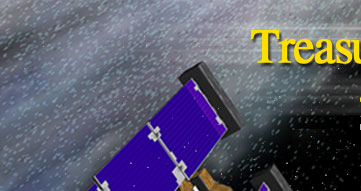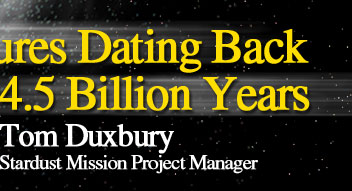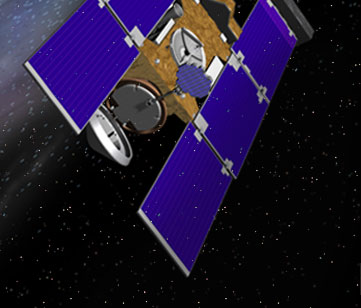
 |
 |
 |

Tom Duxbury Profile
Project Manager, Comet Probe Stardust, Jet Propulsion Laboratory (JPL), NASA
Tom Duxbury is an expert in image processing and analysis. He has participated in a variety of NASA planetary missions including Mariner, Viking, Pioneer, Voyager, Mars Global Surveyor and Clementine. His main expertise is in mapping landing sites. He also collaborated on the Soviet Mars probe Phobos, launched in 1988, working on selecting the landing point, inspections, and landing operations. He was the only American scientist working on that project in Moscow. |
 |

 |
|

 |
I am still very elevated, very excited. I think my feet are just beginning to touch the ground when I walk. I can not tell you how proud I am of the Stardust team.
Stardust had very specific scientific objectives. First of all, we were supposed to fly by the comet Wild 2 and survive that flyby. This was a tremendously hostile environment, with this dust being rocketed off the surface. We did survive, and we took historic pictures of the comet nucleus. The next challenge was to land successfully on Earth, which we did.
We could not have predicted that everything would work so well, but it did. We now have this tremendous treasure of particles that date back 4.5 billion years, to the beginning of our solar system. We found thousands and thousands of these dust particles from the comet.
Now the analysis is being advanced at Johnson Space Center. Our science team picks specific particles, and allows those to go out to the different science team members, so we are now starting decades of analysis of these particles.
|
 |
I think that we did not choose comet Wild 2, but comet Wild 2 chose us.
The comet had been circulating close to Uranus's orbit and had not been exposed to sunlight until the early 1970s. As such, we expect that it contains remnants from the formation of the solar system. In 1974, while it was approaching Jupiter, the planet's gravity redirected the comet to its current orbit, which swings as close to the sun as Mars, and is relatively easier for the probe to reach. It was not difficult to reach Mars orbit to approach Comet Wild 2, but if we had had to pass Jupiter's orbit, our mission would have been much more complicated. The sample return would have been much harder as well. In fact, our chances of success might have been very slight. And so the solar system delivered this pristine comet to us. |
 |
| We were amazed at the pictures of the nucleus of Wild 2. It was really different than any planetary body we had seen. We have seen, of course, other planets and a few comets, but the surface of this body was very, very rugged. It had peaks sticking out hundreds of meters high all over the surface. The surface had no dust. Most planetary bodies have dust that mutes the sharpness of the surface, but Wild 2 did not. We observed very deep craters and sheer cliffs, unlike the stereotypical image of comets as dirty ice balls. So this was tremendously exciting, because those images of that surface are still the most unique of any planetary body we've ever seen before. |
|
 |

 |
Sample return capsule containing comet dust, after landing in the Utah desert(Courtesy of NASA)
 |
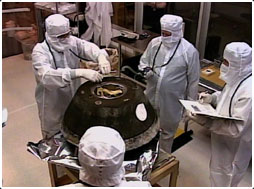 |
After retrieval, the capsule was transferred to a clean room.(Courtesy of NASA)
 |
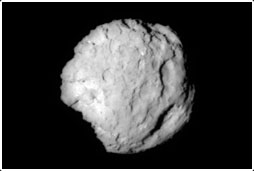 |
| An image of Comet Wild 2 taken by Stardust(Courtesy of NASA) |
|
|

 |
|
